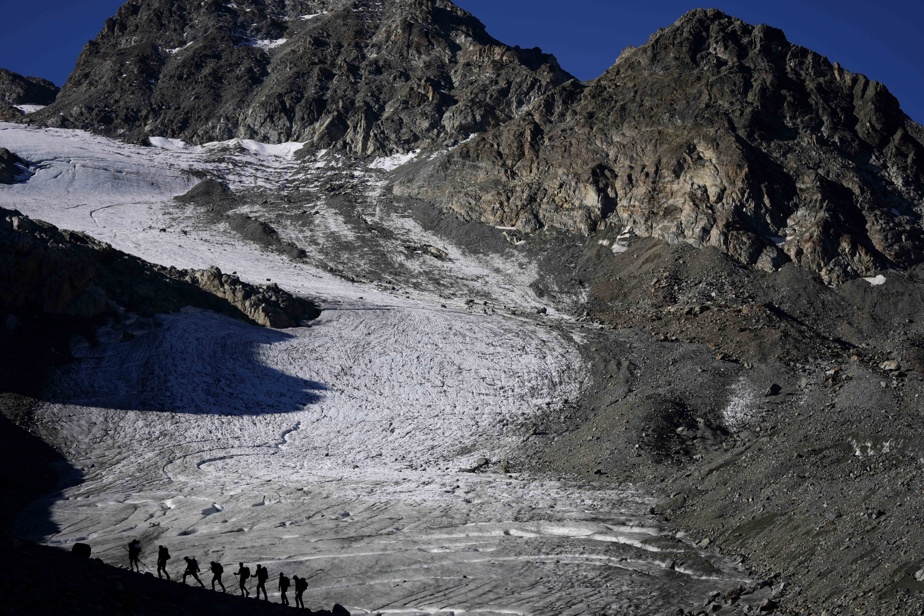Extinction of species, depletion of water sources, melting of glaciers, heatwaves; The world is dangerously approaching new disasters that will fuel each other, warns a new United Nations report. Among the causes of these disasters, a common cause: humans, who therefore also have the power to turn things around.
Interrelated risks
Humanity is “dangerously approaching multiple risk tipping points”, the moment when a socio-ecological system ceases to function and the risk of disasters increases, warns the report Risks of interconnected disasters 2023, published Wednesday by the United Nations University (UNU). These risks are interrelated and could also cause a domino effect. They are also all caused by human behavior, “which means that all solutions can actually come from changing behavior,” he told The Press Caitlyn Eberle, lead author of the report and senior research fellow at the UNU Institute for Environment and Human Security.
Depletion of groundwater
More than half of the world’s largest aquifers are emptying faster than they can regenerate, says the report, which highlights that 70% of withdrawals are intended for agriculture. “It’s like taking a gigantic straw to siphon these aquifers,” illustrates Caitlyn Eberle. Water levels drop lower and lower and eventually drop below the level of the wells. » The impact is enormous for farmers, but also on the food system which depends on them, as happened in the 1990s in Saudi Arabia, when the country went from 6e wheat exporter to importer after depleting its aquifers.
Melting of mountain glaciers
The melting of mountain glaciers can also cause, paradoxically, a lack of water. The phenomenon first causes floods, as we are already seeing in the Himalayas, “but drought will come later”, warns Mme Eberle. After crossing the “water point”, i.e. the moment when the melting reaches its maximum, the quantity of water supplied by the glacier declines sustainably, affecting the irrigation, drinking water or electricity production systems downstream. , as well as the recharge of aquifers. The water peak “is already exceeded or is expected in the next decade” for various small glaciers around the world, including those in western Canada, the report indicates.
Unbearable heat
The increase in heatwaves caused by climate change, which is responsible for 500,000 additional deaths worldwide over the past two decades, demonstrates that solutions require changes in behavior rather than postponing the problem, the report says. “Air conditioning is a band-aid solution,” illustrates Caitlyn Eberle. We must instead “rethink the way we build our societies, the way we build our cities,” she says, rejoicing that this reflection has already begun in many places. This approach simultaneously allows for better water management and the restoration of wetlands, which have beneficial effects on other risk tipping points, she emphasizes.
Accelerated extinctions
Lack of water and heatwaves don’t just affect humans; other living beings also suffer. Due to human activities, the current rate of species extinction is 10 to 100 times higher than Earth’s natural rate, the report said. And the extinction of a species can itself lead to the disappearance of another, which depends on it, or the multiplication of others, of which it was a predator, lastingly disrupting the entire ecosystem. “The real impact of extinction on our life systems is largely underestimated,” says the document, which suggests rethinking our conservation approaches, often focused on one species at a time.
Space debris
Space is so full of debris orbiting the planet that a collision could trigger a chain reaction that would make the use of satellites impossible, the report worries, stressing that such a situation would have serious impacts on weather monitoring, disaster warnings and communications, putting lives at risk. “Most people don’t think these issues are related because they seem so far apart,” says Caitlyn Eberle. She emphasizes that humans have the same attitude on Earth: “We pollute our waters, we pollute our soils. »
Loss of insurance coverage
The increase in natural disasters that comes with climate change could make insurance unavailable or unaffordable for many people, depriving these people of an economic safety net. This could be the case for half a million people in Australia by 2030, the report says. To avoid reaching this and other tipping points of risk, Caitlyn Eberle says we must work to “be good ancestors” to the generations that follow, thinking about the impact that our actions today can have tomorrow. “It completely changes the way we see the world. »
2 billion
Number of people supplied with drinking water from underground water sources worldwide
50%
Proportion of the world’s glaciers that could disappear by 2100
34,260
Number of objects orbiting Earth that are tracked, excluding those too small to track but which could cause significant damage in the event of a collision
Source: report Risks of interconnected disasters 2023
[CHIFFRES/MIC POSSIBLES] 2 billion
Number of people supplied with drinking water from underground water sources worldwide
Source: report Risks of interconnected disasters 2023
50%
Proportion of the world’s glaciers that could disappear by 2100 Source: report Risks of interconnected disasters 2023
34,260
Number of objects orbiting Earth that are tracked, excluding those too small to track but which could cause significant damage in the event of a collision
Source: report Risks of interconnected disasters 2023
